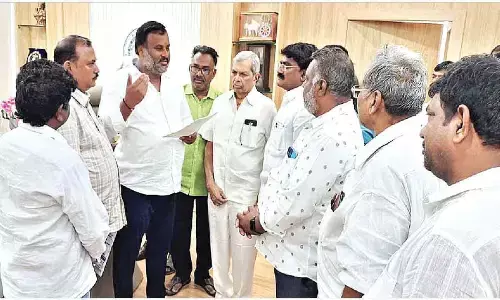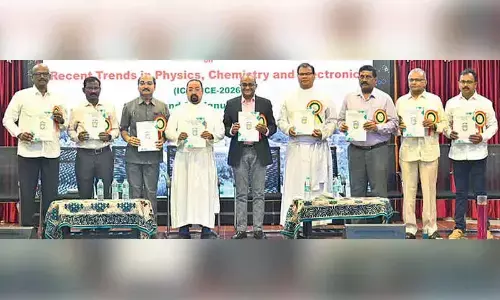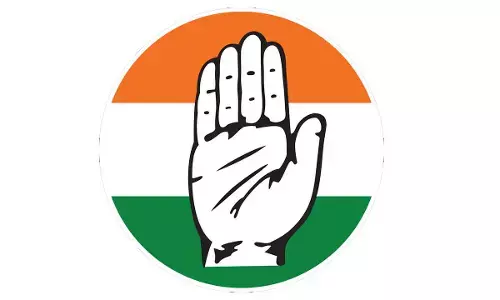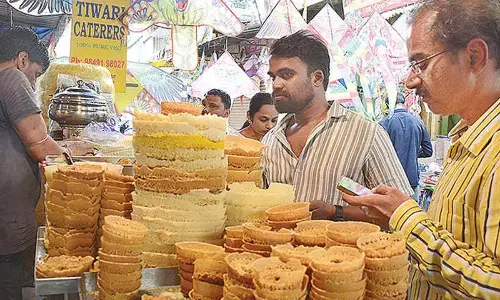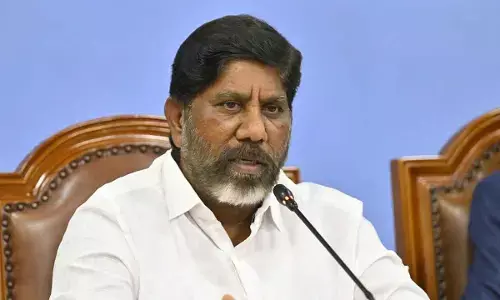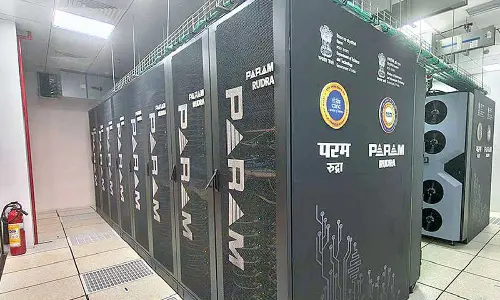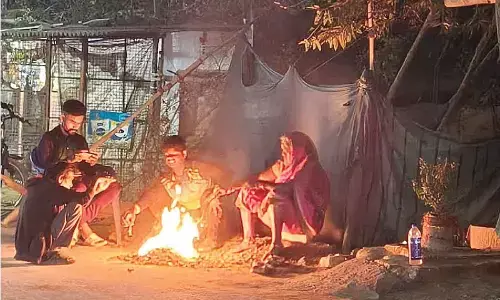Internal security strategy pays off
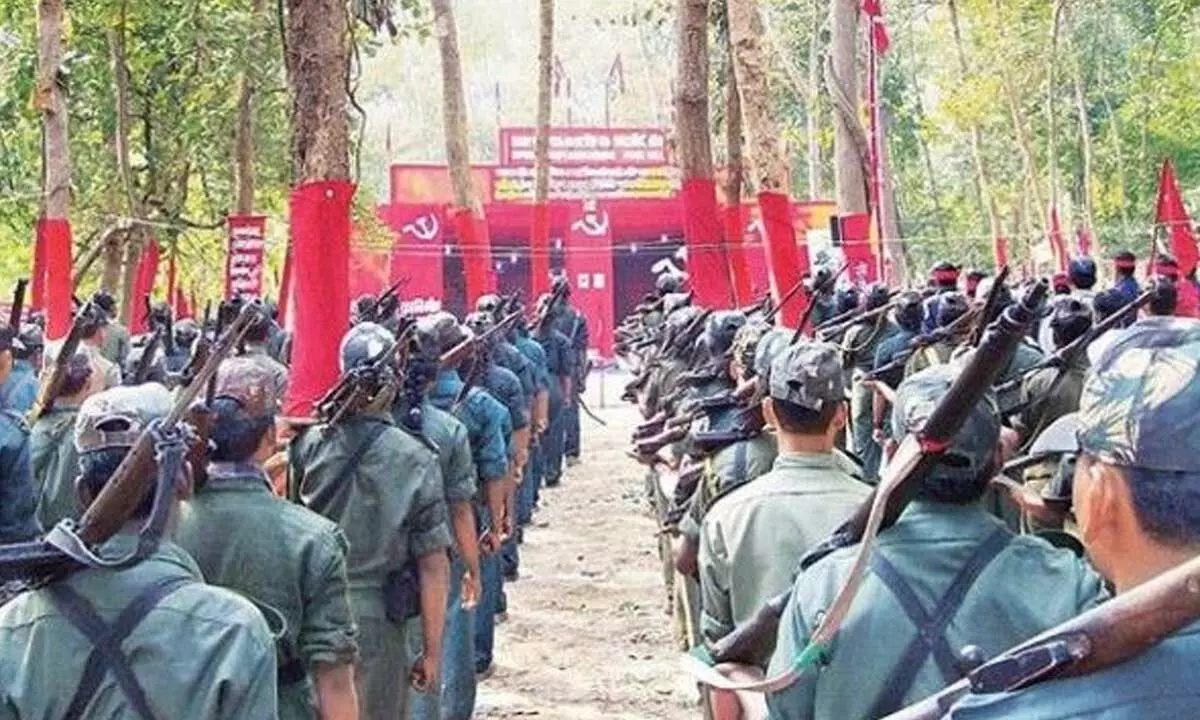
It is a mark of the present Union Home Minister’s farsightedness and dedicated leadership that in his direct guidance a three-fold strategy of strengthening the internal security of the country has already produced good results.
New Delhi: It is a mark of the present Union Home Minister’s farsightedness and dedicated leadership that in his direct guidance a three-fold strategy of strengthening the internal security of the country has already produced good results.
In a nutshell, this can be described as combining development with security in dealing with Maoists, taking the zero tolerance approach to terrorism beyond ‘policy’ to the turf of ‘action’ and integrating internal security with border security and law & order management to ensure total handling of the task of securing the nation.
With his hands-on approach, Amit Shah has lent speed to the efforts initiated in multiple spheres towards this objective and pursued them on an untiring note. This was reflected in his prompt visit to Sukma in Chhattisgarh in April 2021 to make an in-depth examination of the circumstances in which CPI (Maoist) had ambushed security forces led by CRPF on Sukma-Bijapur road and caused the death of 22 personnel, his address at the All India Police Science Congress at Dehradun in October this year, and the follow up directed by him on Police Technology Mission earlier announced by Prime Minister Modi at the DGPs Conference held at Lucknow in 2021.
The crucial details of this strategy need to be highlighted to get a proper understanding of what all was being done. The Home Minister has formulated a comprehensive strategy for tackling Left Wing extremism. While putting down the violence with all the might at the government’s command, modernising police forces, providing them with helicopters and UAVs for surveillance and upgrading some 250 police stations in the Maoist-affected regions, had been given priority.
The Centre has funded the development of road infrastructure, opened post offices, bank branches and ATMs and tried to enhance the financial inclusion of people there. To improve connectivity, mobile towers have been installed in 34 districts affected by the Maoist problem.
Ministry of Home Affairs has created a separate Left Wing Extremism Division to monitor the implementation of the new policy framework evolved by the present regime to deal with the problem.
Tribal communities and Economically Backward groups were being exploited and even threatened by the Maoists to sustain the Protracted People’s War against the Indian nation.
The extremists take to targeting schools, health centres, railways, roads, and bridges to thwart the development schemes of the government.
The Home Minister has highlighted the need for CRPF and other security forces to adopt a people-friendly behaviour, handle welfare schemes for the locals and keep avenues for talks open wherever possible taking the help of civil society groups if available.
It is the multi-prong responses combining counter-insurgency operations and development work, that have enabled the government to drastically curb the violence of Maoists and wean the population from the ideological influence of CPI (Maoist) in the Dandakaranya hinterland of the country.
The Ministry of Home Affairs has been working on a ‘National Policy and Action Plan’ since 2015 to deal with Left Wing Extremism through a collaborative approach between the Centre and the states and there is no doubt that the leadership of the Union Home Minister has made all the difference.
Addressing the Anti-Terrorism Conference organised by the National Investigation Agency (NIA) in October last, Shah perceptibly underscored the importance of dismantling not just terrorism but the entire ‘terrorist ecosystem’ involving cryptocurrency, hawala, terror funding, organised crime and narco-terrorism.
He lauded the compilation of data regarding terrorism in the last few years and emphasised that the fight against terrorism would require collaboration from global to local levels including various states. He called upon the NIA and the IB to standardise training programmes for all Central and state counter-terrorism agencies to ensure uniformity in their methodologies.
The Centre’s initiative in building data finds reflection in the success of the National Automated Fingerprint Identification System in bringing over 90 lakh fingerprints on record. On the occasion of Police Commemoration Day on October 21, the Home Minister said that while maintaining a zero-tolerance policy against terrorism, the government had framed strong laws to curb its spread.
In the context of the modernisation of Police forces, he gave out that a Police Technology Mission had been established with the aim of creating the “world’s best anti-terror force”. The focused attention given to the task of countering terrorist activities in the country, under the direction of Shah, has already resulted in a nearly 65 per cent decline in incidents of terrorism, insurgency and Maoist violence.
In what should be considered a move of great strategic importance in the area of national security, the Home Minister told the 49th All India Police Science Congress at Dehradun in October last year that internal security, border security and good law & order management were the integral components of the system that made the country secure.
The Ministry of Home Affairs has taken several measures to improve law & order throughout the country. The Home Minister has made a significant observation that “as we move towards becoming a robust economic power our police and security agencies must assume a more substantial role in safeguarding our economic institutions”. This is an astute understanding of the reality that ‘national security was inseparable from economic security’ and that in the era of ‘proxy wars’ the adversary could take to attacking economic targets to weaken the opponent.
The Prime Minister, who interacted recently with Army, BRO and ITBP personnel in the border region of Uttarakhand, said that India attached top priority to the development of border regions through infrastructure creation and provision of services there to establish an ‘environment of fearlessness’ as a defining feature of ‘new India’. This is an extremely farsighted strategy of making the people living in the border belt feel like they were on the frontline of a strong nation and freeing them of any sense of vulnerability borne out of ‘remoteness’.
In the period ahead, India will continue facing the threat of ‘radicalisation’ emanating from the Pak-Afghan region because of the reinstallation of the Taliban Emirate at Kabul in 2021, a deepening Sino-Pak axis determined to step up cross-border terrorism in J&K and instigating revival of militancy in Punjab, and cyberattacks designed to damage the economic lifelines of the country.
Deeper cooperation among Intelligence agencies and a system of coordinated response to a threat cutting across the various wings of the government are needed even more and this all is being ensured by an extremely competent National Security Advisor available to both the Prime Minister as well as the Home Minister.
The geopolitical situation is somewhat unstable because of the military conflicts in Eastern Europe and West Asia, signs of a new Cold War appearing on the horizon involving the US and China and economic rivalries driving the global scene. India has done well to pursue the strategy of becoming self-sufficient in economic, military and security spheres, adopting a proactive stance on issues of war and peace and opting for bilateral and multilateral relationships that were mutually beneficial without prejudicing the cause of world peace and global economic advancement.
In the age of proxy wars, external threats to internal security have multiplied and it is a matter of great satisfaction that the Home Minister has taken the task of safeguarding internal security directly in his hands and made sure that all concerned handled their responsibilities with full application and determination.
(The writer is a former Director of the Intelligence Bureau. Views are personal)








